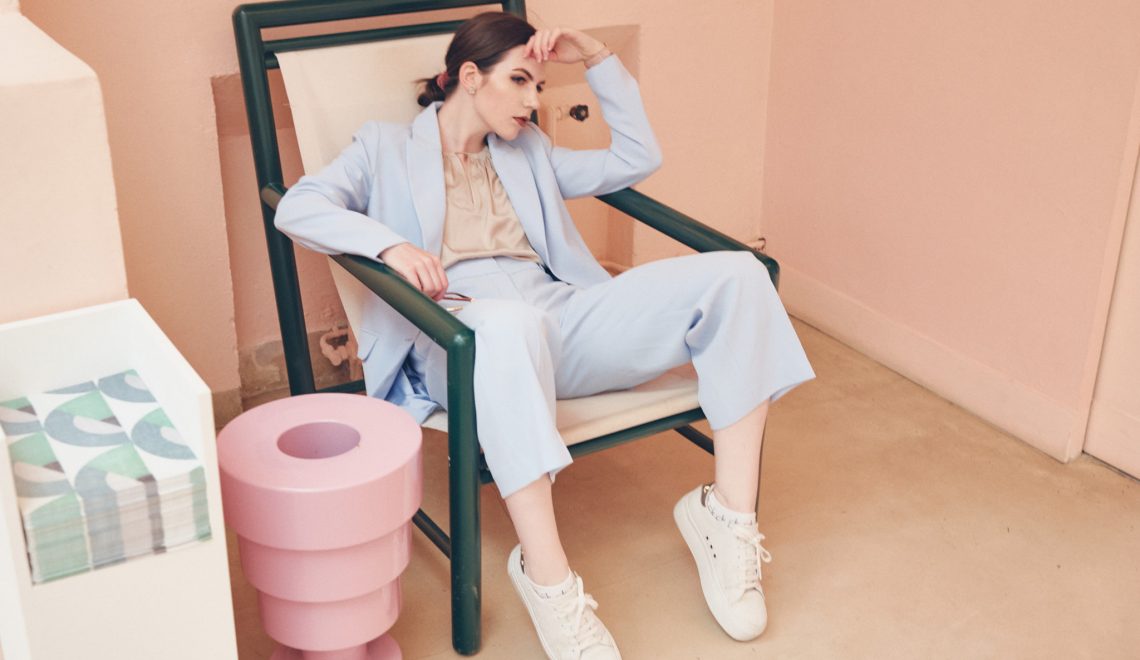WHY WE CAN SEE THE CORONA CRISIS AS AN OPPORTUNITY FOR MORE SUSTAINABILITY

The current crisis situation is decelerating and shows us that the world does not have to turn faster and faster. In times of self-isolation, we regain a sense of what is really important, namely essential values such as solidarity, cohesion and family. But it is not only within one’s own four walls that we can observe an – for many people still unfamiliar – everyday change; public life has also been drastically reduced. Although the closure of shops and public institutions in Central Europe for more than a month ago has been lifted again since the beginning of this week, trade researchers and the retail trade are expecting a weakened shopping mood among consumers. Why the reserved consumer mood could mean an escape from the existing fashion system and what challenges the fashion industry will have to face in the age of Covid-19, I will show in a brief overview based on various perspectives from industry experts.




ARMANIS PLEA FOR A FUNDAMENTAL DECELERATION OF THE FASHION INDUSTRY
The conventional system of fashion lived on six collections per year. These had to work in an incredibly fast cycle, so winter clothing is presented at Fashion Weeks in February, delivered to the shops until July and sold from November onwards. Again and again one heard from designers that there was no time left for creativity. Even Giorgio Armani, in a letter to the US industry magazine WWD, described the discrepancy between sales season and seasons as unacceptable. Before the pandemic, the fashion system had even been “absurd”: “Luxury cannot and must not be fast. It makes no sense that my jackets and suits are already obsolete after only three weeks in the store and are being replaced by almost identical items”. He also pleads for a deliberate and intelligent deceleration of the fashion industry, whereby he himself would exemplarily keep his spring collection 2020 in the shops until the beginning of September. He would also probably either skip the Pre-Fall Collection altogether or reduce it to a minimum.





THE COLLAPSE OF THE SYSTEM AS A SOURCE OF GOOD
In the latest episode of the Business of Fashion podcast, Dutch trend researcher Lidewij Edelkoort also forecasts the future of fashion week and addresses problems that the industry will have to face in the days of Corona. While the current global humanitarian crisis is coming to a head and major fashion houses are joining the fight to contain the virus by donating relief funds or producing medical overalls and protective masks, Edelkoort believes that now is the time for the fashion industry to “jump off the carousel” and look at its retail model. According to the Dutch futurist, the number of 114 billion garments produced annually will decrease in the future as both buyers and brands cut back on unnecessary spending during this period of economic uncertainty.
The usual seasonal rhythm would also change for good, with the current situation “completely changing the way we produce, dress and consume”. All in all, in view of the current collapse of the system, Li Edelkoort sums up a source of good in the long term. Although she makes it clear that the loss of assets and money will have colossal consequences and be hard, she also argues for a reinvention of society: “But if we choose to reinvent society and rebuild and completely resynchronize the systems, we could… we could start with a blank page.”





COMMON COPING STRATEGIES WITHIN THE INDUSTRY
So how will the fashion market look like when the crisis has more or less subsided? Imran Amed, the founder of The Business of Fashion, expects a dramatic change, which will require an unparalleled cooperation within the industries. The recessive market resulting from the pandemic can only be overcome if competing companies exchange data, manners and insights with regard to coping strategies in the future. Furthermore, according to Amed, it is now time to “prepare for a world after the coronavirus”. According to McKinsey, this could result in increased expectations of more sustainable action, as well as a complete redesign of the industrial value chain.
In detail, this could mean smaller seasonal collections or simply more timeless garments. It is possible, however, that next year the products that were planned for this year will still be in the shops.











